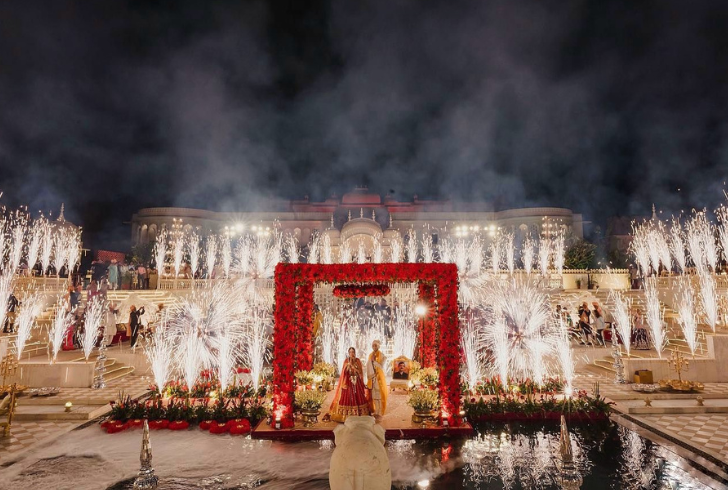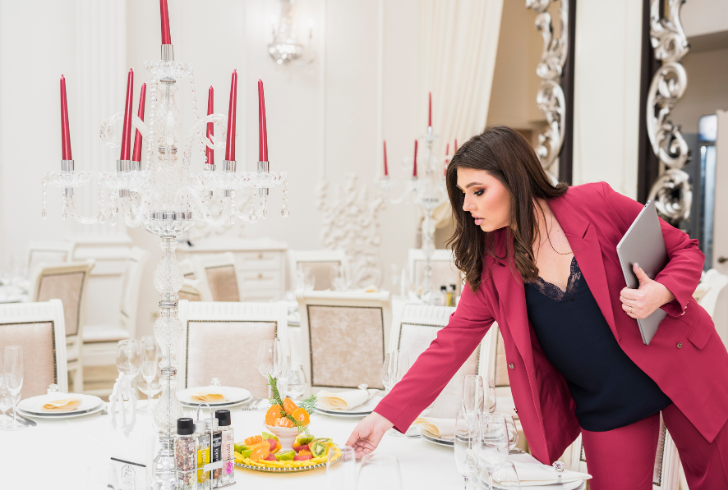Why Cross-Cultural Weddings Are the New Norm in 2025
Weddings have always been a reflection of culture, tradition, and family values. But as the world grows closer, ceremonies in 2025 are stepping into a new identity—where traditions don’t compete but merge. Couples are choosing to weave multiple cultural influences into one celebration, making weddings deeply personal and globally resonant at the same time.
A New Chapter for the Wedding Industry
With close to 10 million weddings celebrated in India each year, it’s no wonder the country sets the pace for global wedding trends. Worth more than $130 billion, India’s wedding industry ranks as the world’s second largest. Within it, cross-cultural unions and destination ceremonies are quickly emerging as the fastest-growing categories.
From $3.5 billion today, India’s destination wedding sector is forecast to reach $25.7 billion by 2033—an impressive climb at 22% CAGR. This trajectory underscores how weddings are evolving into curated experiences, merging heritage with high design, travel, and luxury.

Instagram | anamchara_weddings | The Indian wedding market is booming, with cross-cultural and destination weddings leading the way.
Where Tradition Meets Modern Expression
Today’s couples are choosing integration over division when it comes to weddings. Indian traditions such as the saat phere are now frequently paired with Western ceremonies, producing celebrations that are both culturally rich and personally meaningful.
This blending goes deeper than appearances. Décor may combine handworked Indian textiles with Western minimalism, while menus pair local specialties with international favorites. Every choice becomes a balance of heritage and contemporary taste.
Symbols of Cultural Connection
Cross-cultural weddings do more than unite two people—they symbolize the coming together of traditions. Including rituals from both cultures often becomes a gesture of respect to families and a statement of inclusivity. A mehendi might be set to the rhythm of jazz, or a church wedding could include blessings from Indian customs.
This fusion reflects larger shifts: rising affluence, global travel, and exposure to diverse cultures have all influenced how people celebrate. Weddings now express a desire to embrace diversity while staying connected to roots.

Freepik | Designers and planners get to combine diverse heritages in cross-cultural weddings creatively.
Crafting Experiences That Tell a Story
For wedding planners and designers, these unions open creative possibilities. Every detail—from wardrobe choices to playlists—is selected to represent both sides of the couple’s story. This approach goes far beyond aesthetics; it frames the kind of shared life they want to begin.
Instead of adhering to rigid formulas, weddings are becoming stories told through rituals and personal touches. From hybrid ceremonies to customized vows, the emphasis is on authenticity, inclusivity, and emotional resonance.
The Future of Weddings
Cross-cultural weddings are part of a permanent shift toward meaningful, personalized experiences. Looking ahead, they will continue to showcase how love bridges cultures—where traditions enrich rather than oppose one another.
The essence of future weddings lies in celebration, not compromise—ceremonies that honor heritage while creating experiences that feel timeless and forward-looking.